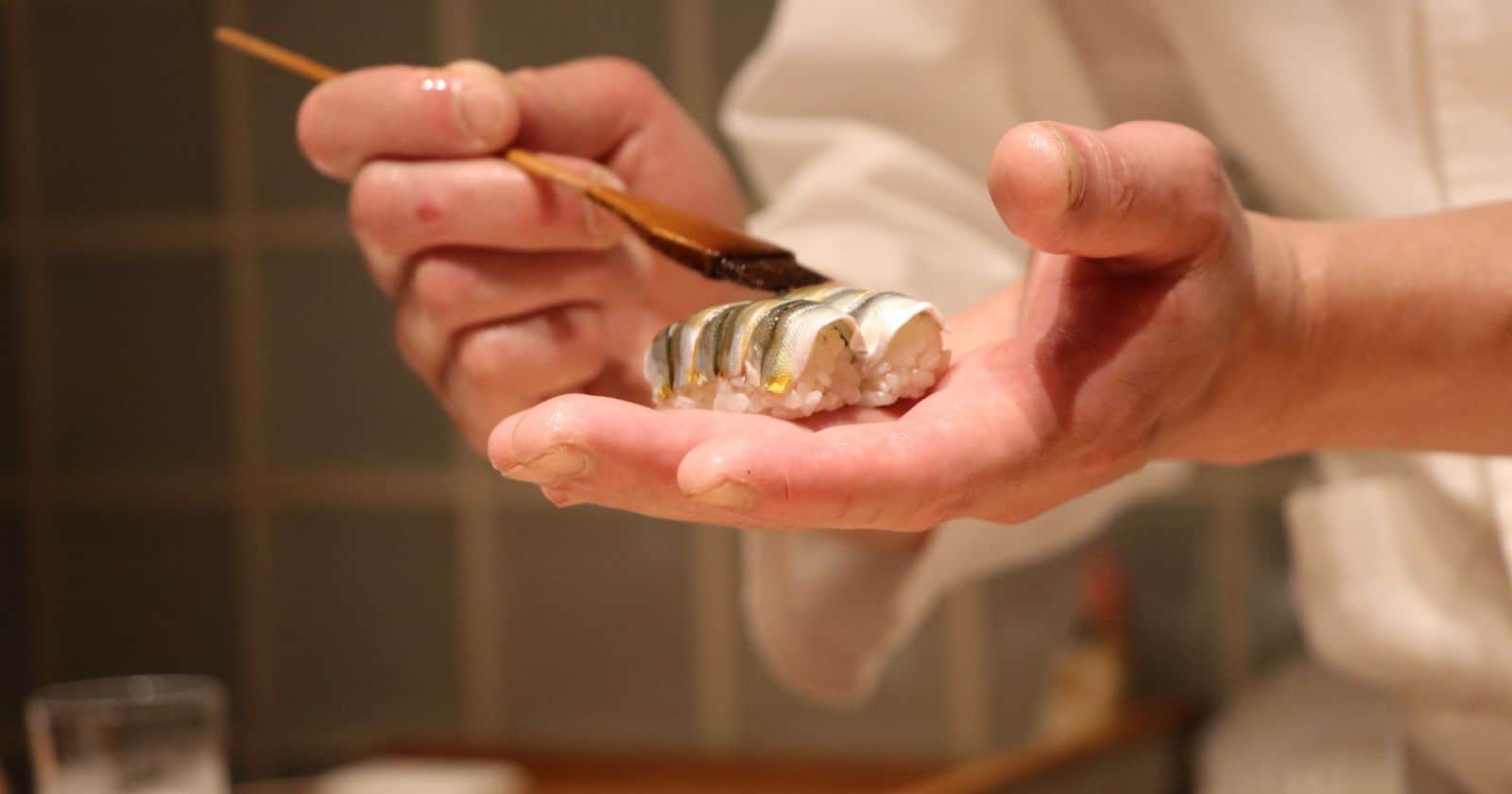Hey there, fellow foodie! If you’re like me, you love the delicious taste of raw fish in sushi, sashimi, and poke bowls. But it’s normal to have some concerns about eating raw seafood. After all, we’re taught from a young age to fully cook meats to avoid getting sick. So how can thinly sliced raw tuna or salmon be totally fine to eat?
As it turns out, there’s a couple solid reasons why raw fish prepared properly can be just as safe as cooked fish:
- Sushi-grade fish is super fresh and high quality. Sushi chefs only use the freshest fish available, which hasn’t had time for bacteria to multiply. The fish is also expertly handled and stored at cool temps to inhibit bacteria growth.
- The fish is frozen to kill parasites. According to food safety experts, freezing fish to the appropriate temp kills any parasites, worms, or other nasty bugs that may be present. So sushi fish is often kept frozen until right before being sliced up for your plate!
- Raw meat and raw fish carry different risks. The main risks with raw meat come from bacteria like E. coli and Salmonella. But these bugs generally don’t thrive in saltwater fish like tuna or salmon. Parasites are a bigger concern with raw fish, but proper freezing neutralizes that threat.
- Proper storage and handling keeps bacteria at bay. Sushi chefs are meticulous about keeping workspaces and tools clean. This prevents any bacteria on the raw fish from multiplying. Promptly storing the prepared sushi in cold temps continues to inhibit bacteria growth.
So while eating raw meats seems sketchy, you can feel confident that raw fish prepared properly as sushi, sashimi or poke is perfectly safe to enjoy! Stick around as I share more insider info about seafood and other tasty cuisine. Let me know if you have any other food questions!
The Safety of Eating Raw Fish vs. Raw Meat
Eating raw fish and raw meat carry different risks. The main risks with raw meat come from bacteria like E. coli and Salmonella. These bugs can make you seriously ill if you eat undercooked beef, pork, chicken, etc.
On the other hand, parasites are a bigger concern with raw fish. But properly handled sushi-grade seafood is treated in ways that kill any parasites present.
Here’s Why You Can Feel Good About Eating Raw Fish in Sushi and Sashimi:
Sushi Fish is Extra Fresh
Sushi chefs only use the absolute freshest fish available – think “line caught that morning” fresh! Fish this fresh hasn’t had time for bacteria to multiply and grow.
Raw meat also starts out fresh. But bacteria multiply rapidly in raw meat, especially ground meats like hamburger.
So super fresh sushi fish has a head start on safety compared to raw meats.
Special Handling Inhibits Bacteria Growth
Sushi chefs expertly handle and store fish to prevent bacteria growth:
- Fish is kept on ice or refrigerated until ready to slice.
- Chefs sanitize knives, boards, hands between types of fish.
- Workspaces are kept clean.
- Sliced sushi fish goes directly onto plates or trays over ice.
This special handling at cool temps prevents bacteria from multiplying.
Saltwater Fish Don’t Have as Much Dangerous Bacteria
Fish like tuna and salmon live in cold saltwater their whole lives. Their flesh never comes in contact with fecal matter like land animals.
So saltwater fish don’t contain high levels of harmful bacteria like E. coli, Salmonella, and others found in the guts and feces of land animals. Their natural environment helps keeps levels of dangerous bacteria low.
Freezing Kills Parasites
Freezing is highly effective at killing any parasitic worms or other bugs like Anisakis that can be present in fish.
Sushi chefs often freeze the fish until just before it’s sliced and served to you. Or they rely on fish frozen previously to ultra-low temps.
This freezing process kills parasites, making the fish safer to eat raw.
Proper Storage Stops Bacteria Growth
Good sushi restaurants go the extra mile to serve the freshest, safest fish possible:
- Sushi fish is kept at cool refrigerator temps right up until being served.
- Ready-to-eat sushi rolls are kept over ice or chilled plates.
- Leftover ingredients are properly stored or discarded.
Proper temps prevent any bacteria on the raw fish from multiplying to dangerous levels.
Regulations and Inspections Ensure Safety
The seafood industry is heavily regulated with strict protocols in place for:
- Allowable catch methods
- Quick chilling requirements
- Processing and storage temperatures
- Cleanliness standards
- Routine facility inspections
Reputable sushi restaurants follow all the guidelines to legally serve raw seafood that is safe to eat.
Raw Fish Can Be Safer Than Cooked Fish
Now this might blow your mind – in some cases, raw fish can actually be safer than cooked fish!
Here’s why:
- Cooking can spread bacteria from the surface down into the flesh. So if fish isn’t super fresh, cooking can drive bacteria deeper into the meat.
- Cross-contamination is a risk when cooking. Bacteria from hands, utensils, surfaces can get onto cooked fish.
- Overhandling fish when cooking provides more opportunities for bacteria to spread.
Of course fully-cooked fish is safe when properly handled. But the point is that raw fish preparation avoids some of these cooking safety issues.
The Bottom Line on Raw Fish Safety
While the idea of consuming raw fish may seem sketchy, you can feel confident that:
- Responsibly-sourced sushi-grade seafood is safe to eat raw when properly handled.
- Reputable sushi restaurants go above and beyond to serve you fresh, delicious fish that has been treated to kill parasites and prevent bacteria growth.
- Government regulations and inspections ensure proper protocols are followed to protect consumers.
So next time you grab a spicy tuna roll or platter of sashimi, you can relax knowing the raw fish is most likely safer than the chicken wings cooked at home! Got any other food safety questions? Hit reply – I’m happy to chat more about this topic.





